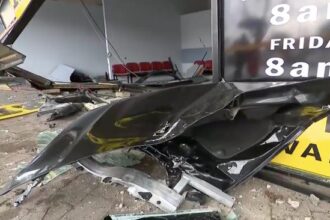Israel Launches Massive Strikes on Iranian Targets
Israel has struck dozens of targets inside Iran, including vital nuclear sites and military installations, in a dramatic escalation of regional tensions. The operation marks a significant shift in Israel’s military posture, with claims of acting unilaterally due to Iran’s alleged advancement towards building nuclear warheads. “Israel said 200 Israeli fighter jets participated in the operation, striking 100 targets.”
Explosions Rock Iran as Israel Hits Key Nuclear and Military Sites
Overnight, explosions rocked multiple locations in Iran. According to reports, Israel’s fighter jets targeted nuclear facilities, key military installations, and individuals central to Iran’s military and nuclear ambitions. This unprecedented military operation has stunned the international community.
Natanz Nuclear Site Among Struck Facilities
Video footage and satellite images have surfaced, showing massive damage to various sites. The main nuclear enrichment facility at Natanz was among those hit. The International Atomic Energy Agency (IAEA) confirmed the strike but noted that it is unclear how much damage occurred. Natanz, partially above ground, houses halls of centrifuges critical for Iran’s nuclear program.
Some Facilities Spared, but Message Sent Loud and Clear
While Natanz was targeted, Iran’s other nuclear facilities at Fordow, Isfahan, and the Bushehr nuclear power plant reportedly escaped damage, according to IAEA sources. Despite this, the strike represents a bold signal by Israel regarding its red lines on Iran’s nuclear activities.
Iran’s Military Command and Air Defense Systems Also Targeted
Israel’s operation also focused on military installations. Dozens of radar systems and surface-to-air missile launchers were reportedly destroyed. Strikes in Tehran hit the headquarters of the paramilitary Revolutionary Guards, shaking the core of Iran’s military structure.

Key Iranian Military Leaders and Scientists Killed in Strikes
Tragically, key Iranian military figures and scientists were killed. “Iranian state media said the head of the Revolutionary Guards, Gen Hossein Salami, the army chief of staff, Maj Gen Mohammad Bagheri, and the commander of the Khatam al-Anbia joint forces headquarters, Maj Gen Gholamali Rashid, had been killed in the strikes, as well as six nuclear scientists, including Fereydoun Abbasi.”
Iran Retaliates with Drone Barrage as Regional Tensions Surge
In response, Iran launched about 100 drones at Israel. Iran’s supreme leader, Ali Khamenei, vowed “severe punishment” as tensions escalated rapidly. Both Iraq and Jordan reported intercepting drones and missiles that crossed into their airspace, highlighting the regional fallout of the conflict.
Netanyahu Defends Operation, Citing Nuclear Threat Intelligence
Israeli Prime Minister Benjamin Netanyahu justified the operation by citing intelligence that Iran had taken unprecedented steps towards building nuclear bombs. According to Netanyahu, Iran amassed enough fissile material for nine warheads and was moving towards final assembly.
Diplomatic Talks Jeopardized Amid IAEA Violations and Rising Conflict
This escalation comes just days before planned US-Iranian diplomatic talks in Oman aimed at defusing nuclear tensions. The IAEA had recently ruled that Iran was violating its obligations under the nuclear non-proliferation treaty by failing to fully cooperate with inspections.
Global Stakes Rise as Conflict Threatens to Expand
Israel’s strike on Iran has reshaped the geopolitical landscape. The world watches closely as the risk of broader conflict looms.






